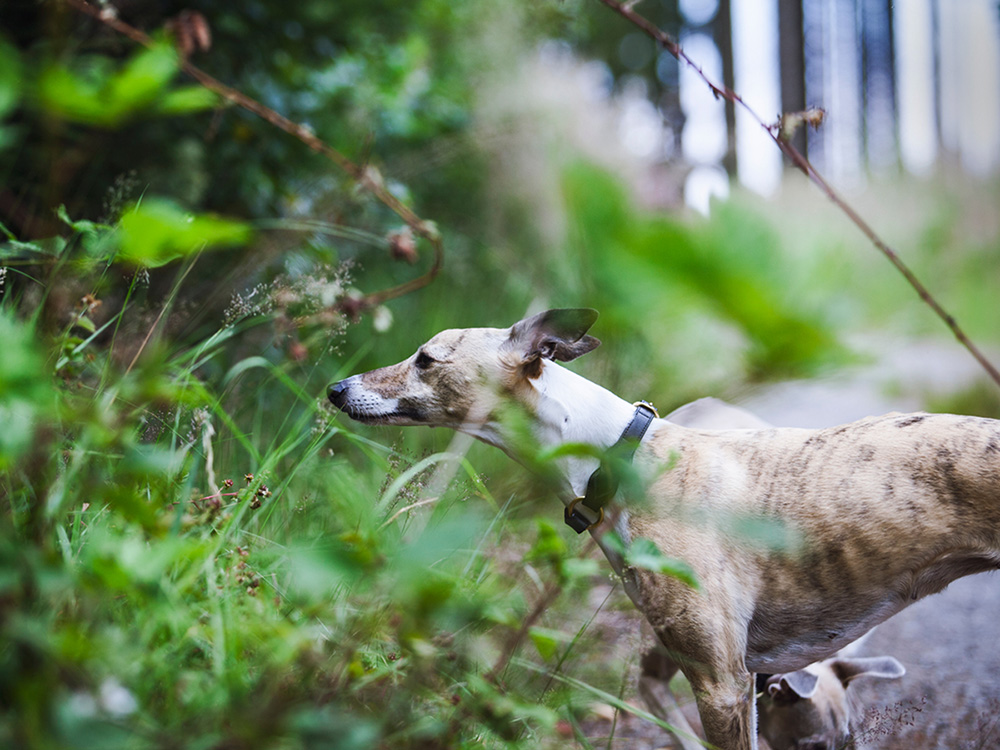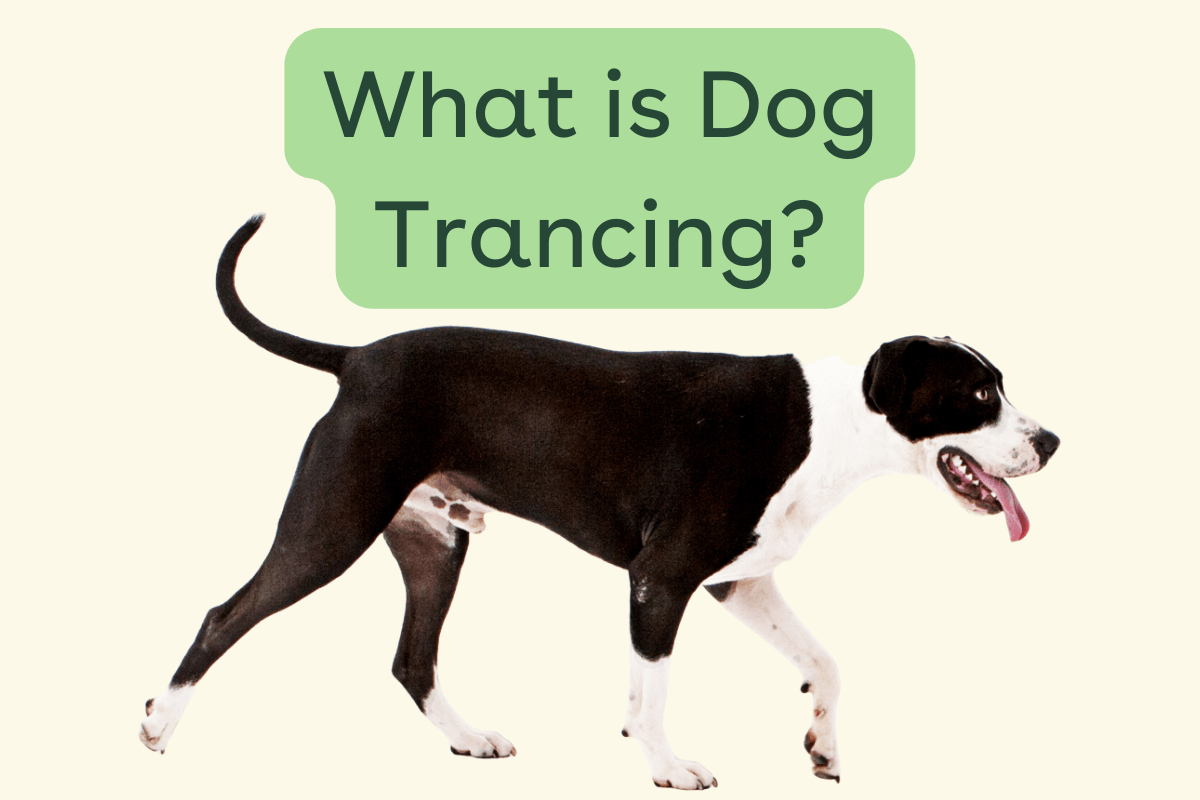
Dog trancing is when dogs enter a trance-like state, usually triggered by a specific stimulus. It involves repetitive and rhythmic behaviors such as walking or running in circles, often with a glazed and distant look in their eyes.
Dog trancing, also known as ghost walking or shadow chasing, is a behavior that has puzzled dog owners and experts for years. It is not fully understood why dogs engage in this peculiar behavior, but it is believed to be a self-soothing mechanism or a way to release excess energy.
Some dogs may trance in response to objects that create visual stimuli, such as shadows, reflections, or flashing lights. Others may wander in specific locations, such as around trees or in certain house rooms. Although it may seem strange, trancing is harmless and does not indicate any underlying health issues. Understanding this behavior can help dog owners provide their furry friends with a safe and enriching environment.
:strip_icc()/Dogundertree-GettyImages-475180686-ee6368db64ed4a0c9e89cf7d126f9f34.jpeg)
Understanding Dog Trancing
Definition Of Dog Trancing
Dog trancing, also known as the “ghost walk” or the “trance dance,” is a behavior observed in certain dogs where they enter a state of deep focus and concentration. During this trance-like state, the dog appears to be disconnected from its surroundings and engages in repetitive, rhythmic movements or behaviors.
Causes Of Dog Trancing
Dog trancing is believed to be a self-soothing behavior that dogs engage in to reduce stress or arousal. Some experts believe that the repetitive movements and the rhythm of trancing can have a calming effect on the dog’s nervous system. While the exact causes of dog trancing are not fully understood, certain factors may contribute to its occurrence.
One possible cause of dog trancing is an inherited predisposition. Certain dog breeds, such as the Afghan Hound and the Greyhound, are more prone to exhibiting trancing behavior. It is thought that these breeds may have a genetic inclination towards engaging in repetitive behaviors.
Another potential cause of dog trancing is environmental triggers. Dogs may enter a trance-like state in response to specific stimuli in their environment. These triggers can vary from dog to dog, but commonly reported triggers include the sight of shiny or reflective objects, such as mirrors or windows, or the presence of certain sounds or smells.
Common Triggers For Dog Trancing
| Triggers | Description |
|---|---|
| Reflections | Some dogs are drawn to the sight of their reflection in mirrors, glass doors, or windows and will engage in trancing behavior when they encounter these reflective surfaces. |
| Shadows | Dogs may become fixated on the movements of their own shadow or the shadow of objects, leading them to enter a trance-like state. |
| Lights | The flickering or movement of lights, such as sunlight filtering through leaves or the reflections created by a ceiling fan, can trigger trancing behavior in some dogs. |
| Textures | Some dogs may engage in trancing when they come into contact with certain textures, such as soft blankets or plush surfaces. |
Dog trancing is a fascinating behavior that has captured the attention of dog owners and experts alike. While more research is needed to fully understand the causes and mechanisms behind trancing, it is essential to note that not all dogs will exhibit this behavior. Suppose you notice your dog engaging in trancing. In that case, it is always a good idea to consult a veterinarian or a professional dog behaviorist to rule out any underlying health concerns or potential issues.

Signs And Behaviors Of Dog Trancing
Understanding the signs and behaviors of dog trancing is crucial for dog owners and enthusiasts alike. Dog trancing is a unique phenomenon where dogs enter a trance-like state, seemingly mesmerized by certain stimuli in their environment. It is essential to recognize the physical signs and behavioral indicators of dog trancing to ensure the well-being and safety of our furry friends.
Physical Signs Of Dog Trancing
When a dog enters a trance-like state, there are specific physical signs that can help us identify this behavior:
- Stiff body posture: Dogs in a trance tend to have a rigid stance with their bodies still.
- Fixed gaze: Their eyes become fixated on the triggering stimulus, often resulting in a glazed-over or unfocused expression.
- Slow and deliberate movements: Dogs may move slowly and purposefully while in a trance, as if they are moving in a dream-like state.
- Paralysis: In some cases, a dog’s body may become completely still and unresponsive to external stimuli.
The presence of these physical signs can be an indication that your dog is experiencing trancing behavior. While it may seem unusual or even concerning, trancing is typically harmless and temporary.
Behavioral Indicators Of Dog Trancing
In addition to the physical signs, several behavioral indicators can help us recognize dog trancing:
- Attention fixation: Dogs in a trance will often fixate their attention on the triggering stimulus, ignoring other distractions around them.
- Repetitive movements: They may exhibit repetitive behaviors such as circling or pawing at the triggering stimulus.
- Zoning out: Dogs in a trance may appear to be in a different mental state, as if they are “zoning out” from their surroundings.
- Altered responsiveness: During trancing, dogs may not respond to their name or commands, displaying a reduced level of responsiveness.
It’s important to note that dog trancing should be distinguished from other abnormal behaviors or medical conditions. If you notice any unusual symptoms or changes in your dog’s behavior, it’s always wise to consult a veterinarian.
In conclusion, being aware of the physical signs and behavioral indicators of dog trancing can help us better understand and respond to this unique behavior. Remember, while trancing is generally harmless, it’s essential to prioritize your dog’s well-being and ensure their safety during these trance-like episodes.
Tips For Managing Dog Trancing
When it comes to managing dog trancing, there are a few strategies you can implement to help your furry friend overcome this behavior. Recognizing stress factors, redirecting and distracting the dog, and seeking professional help are critical steps in effectively managing dog trancing. Here are some practical tips to help you navigate this process:
Recognizing Stress Factors
Identifying the stress factors that trigger your dog’s trancing behavior is essential. Dog trancing can be a response to fear, anxiety, or unfamiliar situations. By observing your dog’s body language and behavior, you can better understand what triggers their trancing episodes. Everyday stressors could be loud noises, new surroundings, or certain types of movements.
Redirecting And Distracting The Dog
Redirecting your dog’s attention is crucial to managing trancing behavior. When you notice your dog starting to enter a trancing state, try to shift their focus to a more positive and engaging activity. This could include playing with their favorite toy, going for a walk, or practicing obedience commands. Providing mental and physical stimulation can help break the trance and shift their focus away from the triggering stimulus.
- Engage your dog in interactive games or puzzles that require problem-solving skills.
- Take your dog for regular walks or engage in activities that allow them to release pent-up energy.
- Teach your dog new tricks or give them a task to accomplish, such as finding hidden treats.
- Use positive reinforcement techniques, such as treats or praise, to reward your dog for focusing on alternative activities.
- Spend quality time with your dog, providing comfort and reassurance when they show signs of stress.
Seeking Professional Help
If your dog’s trancing behavior persists or becomes problematic, it may be necessary to seek professional help from a qualified dog trainer or animal behaviorist. These experts can assess your dog’s specific situation and provide tailored strategies to manage and address the underlying causes of trancing. They can guide you in implementing appropriate training techniques and offer support throughout the process to ensure the well-being of your furry companion. Remember, seeking professional help is not a sign of failure but a commitment to your dog’s health and happiness.

Frequently Asked Questions For What Is Dog Trancing?
Q: What Is Dog Trancing?
Dog trancing is a trance-like state where a dog enters a focused, almost hypnotic state. It often occurs when a dog is in close proximity to objects with specific characteristics, such as swaying or dangling, and it is believed to be a self-calming behavior.
Q: Why Do Dogs Trance?
A: Dogs trance as a self-soothing mechanism, often in response to specific visual or sensory stimuli. This behavior is thought to be rooted in their ancestral instincts, where particular objects or movements trigger an instinct for dogs to remain still and alert in the presence of potential prey or threats.
Q: Is Dog Trancing Normal?
A: Yes, dog trancing is considered a normal behavior and is commonly observed in certain breeds. However, not all dogs exhibit this behavior, and it is essential to note that excessive or compulsive trancing may indicate an underlying issue that requires attention from a veterinarian or animal behaviorist.
Q: Can Dog Trancing Be Harmful?
A: In most cases, dog trancing is harmless and natural. However, dog owners need to monitor their pets during training to ensure they do not become overly fixated or exhibit signs of distress. If the behavior becomes excessive or interferes with daily activities, seeking professional guidance is recommended.
Conclusion
To wrap it up, dog trancing is a fascinating behavior in certain dogs during moments of relaxation. It can be strange to witness, but it is usually harmless and a natural part of their mental state. While the exact reasons behind dog trancing are still not fully understood, dog owners must be aware of this behavior and ensure their pet’s safety during these trance-like episodes.
Remember, if you notice any unusual behavior or signs of distress in your dog, consulting with a professional is always a good idea.




